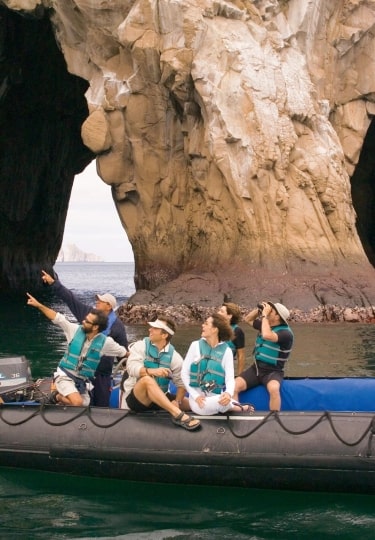Every aspect of the volcanic Galapagos archipelago is special and genuinely unique, from the wildlife you encounter here to the jagged volcanic landscape, the sparkling, mineral-rich beaches, and the dazzling colors of the underwater world.
Each day brings life-changing experiences and surprises, whether you’re hiking through a cactus forest surrounded by iguanas, snorkeling amid shoals of tropical fish, or picking your way around basking sea lions on a beach where turtles nest.
Essentially, any itinerary incorporating any combination of islands will amaze you. There are, however, a few places to include in your wish list if there are specific creatures or activities you’ve dreamed of. Here are 10 unforgettable things to do in the Galapagos.
Hike to the Summit of Bartolomé Island
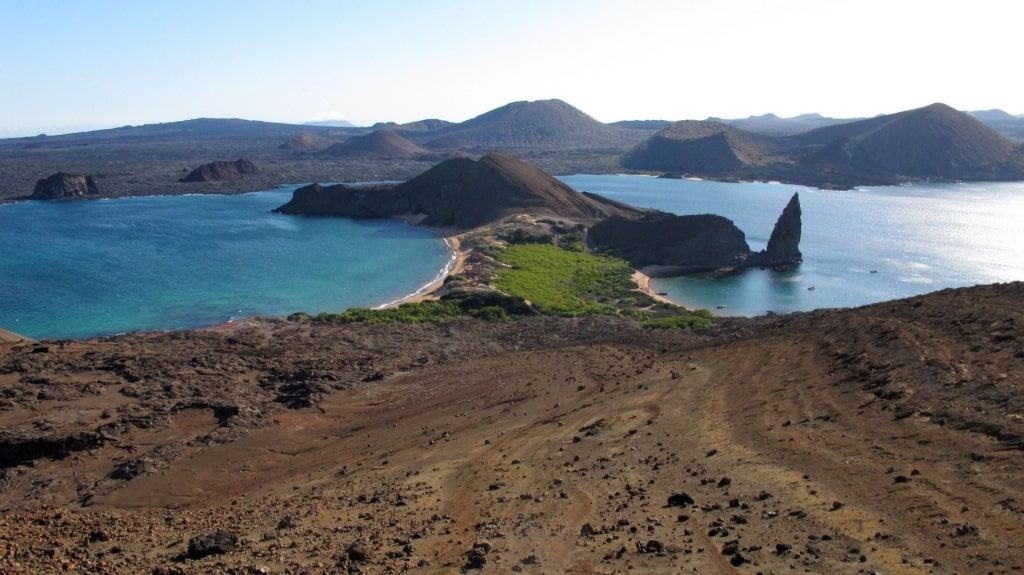
Bartolomé Island
The volcanic spike of Pinnacle Rock is one of the most iconic images of the Galapagos. It juts out of the sea on the edge of tiny Bartolomé, an islet off Santiago Island just half a square mile in area. Bartolomé itself is the vent of an ancient volcano, and you can hike to the top for stupendous views of Pinnacle Rock and the surrounding islands, from North Seymour to Santa Cruz and Rabida.
You’ll reach the summit via a wooden walkway, with 300 steps to negotiate. Like everywhere in the Galapagos, you’re not allowed to stray from the path in order to protect the flora and fauna. Once you’ve admired the view from 374 feet up, head back down to the yellow sand beach. The base of Pinnacle Rock is a popular habitat for Galapagos penguins, while you may also spot sea turtles here, digging their nests in the sand.
Walk Among Nesting Frigatebirds
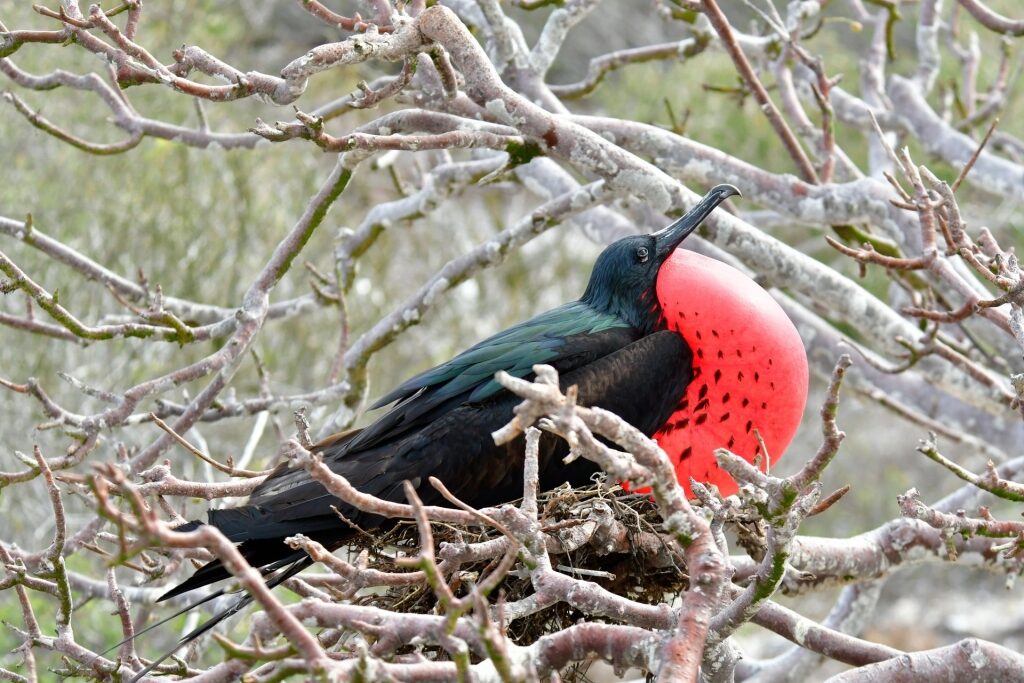
Frigatebird
Frigatebirds are extraordinary looking, thanks to their glossy black plumage, forked tails, and distinctive scarlet throat pouches. Only the males have this pouch, and during the breeding season, they’ll puff it up with air to many times its size to attract females.
Frigatebirds can be found all over the islands, but the most impressive colony is on North Seymour. You’ll see the males sitting on the ground, in full display, between March and June.
Eggs hatch in July and August, a good time to spot juveniles. Like other Galapagos birds, frigatebirds have no fear of humans. However, you must keep a respectful distance to avoid disturbing them. The national park rules state six feet from any animal, although sometimes the animals themselves don’t observe this.
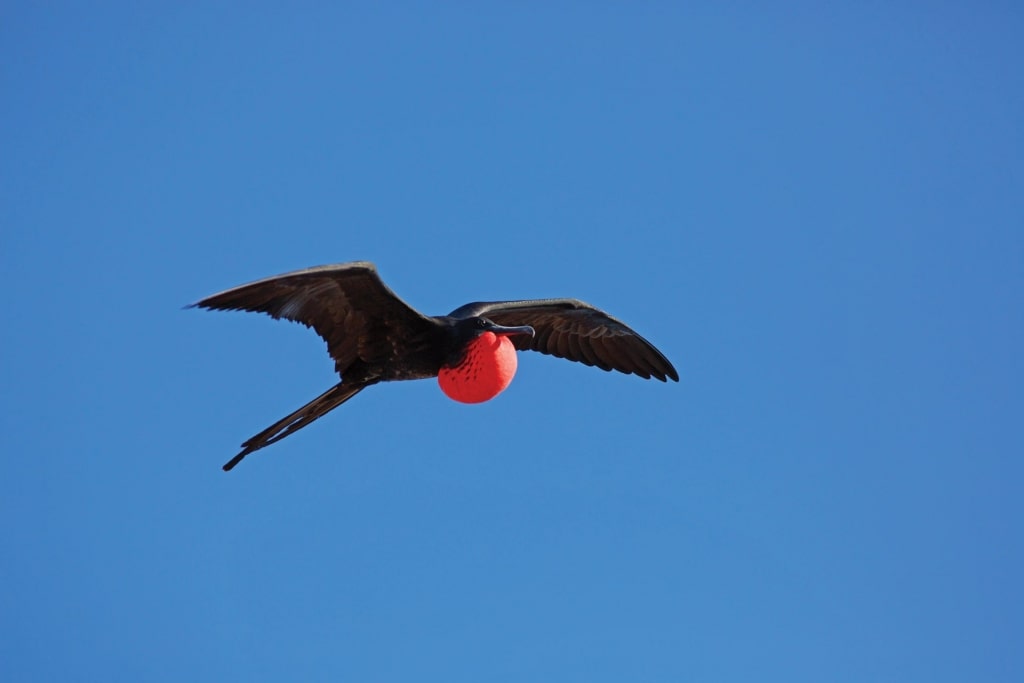
Frigatebird
Watching frigatebirds feed is one of the most unique things to do in the Galapagos Islands. They don’t land on the water, but seize their prey as they fly, sometimes plucking flying fish out of the water. You’ll see how they get their nickname “pirates of the sea”, if you spot one dive-bombing a flying pelican, wrestling fish from the unfortunate pelican’s bill.
Read: 17 Incredible Galapagos Animals to Spot During Your Vacation
Watch the Sunset Behind Kicker Rock
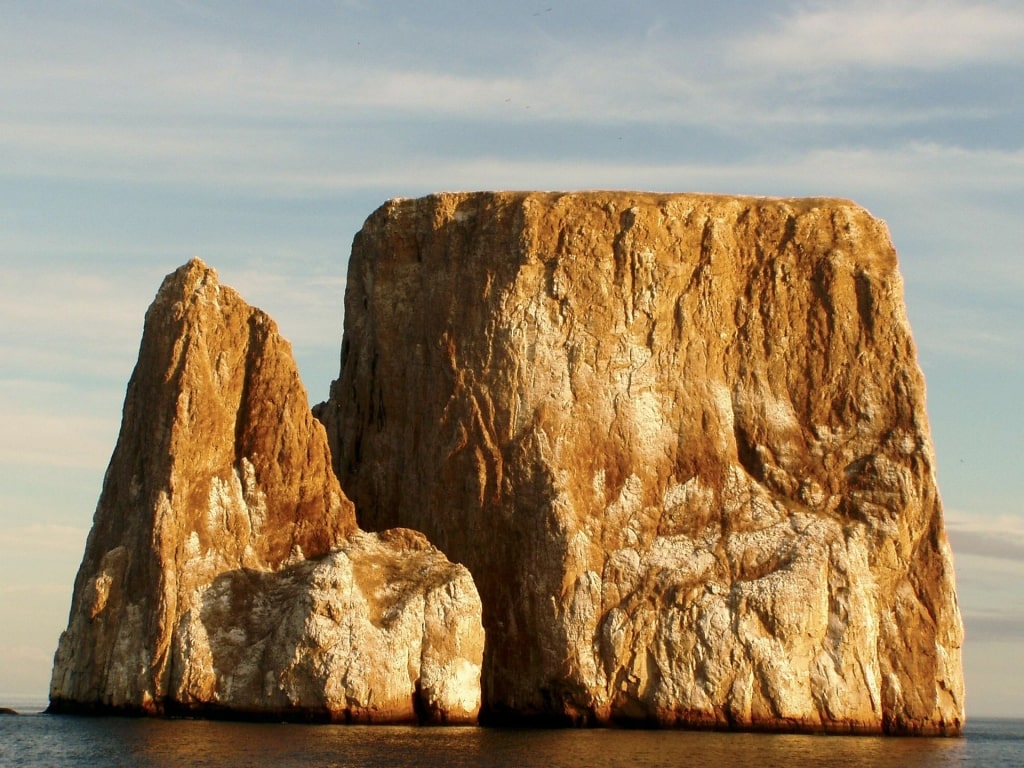
Kicker Rock
Kicker Rock, or León Dormido (sleeping lion) as it’s known locally, is another iconic rock formation in the Galapagos, just off San Cristobal Island. Technically, this is a vertical tuff cone, which is formed when boiling lava hits cold water. The cone has split into two as a result of erosion, leaving a solid block, the “sleeping lion”, and a dramatic, sheer-sided spike, some 480 feet tall.
Kicker Rock is known as one of the best dive sites in the Galapagos, where you could spot manta rays, sea turtles, sharks, and sometimes hammerheads in the deep, cool water. Ride around on a zodiac and you’ll see blue-footed boobies and frigatebirds on the cliffs and sea lions basking on the rocks around the base.
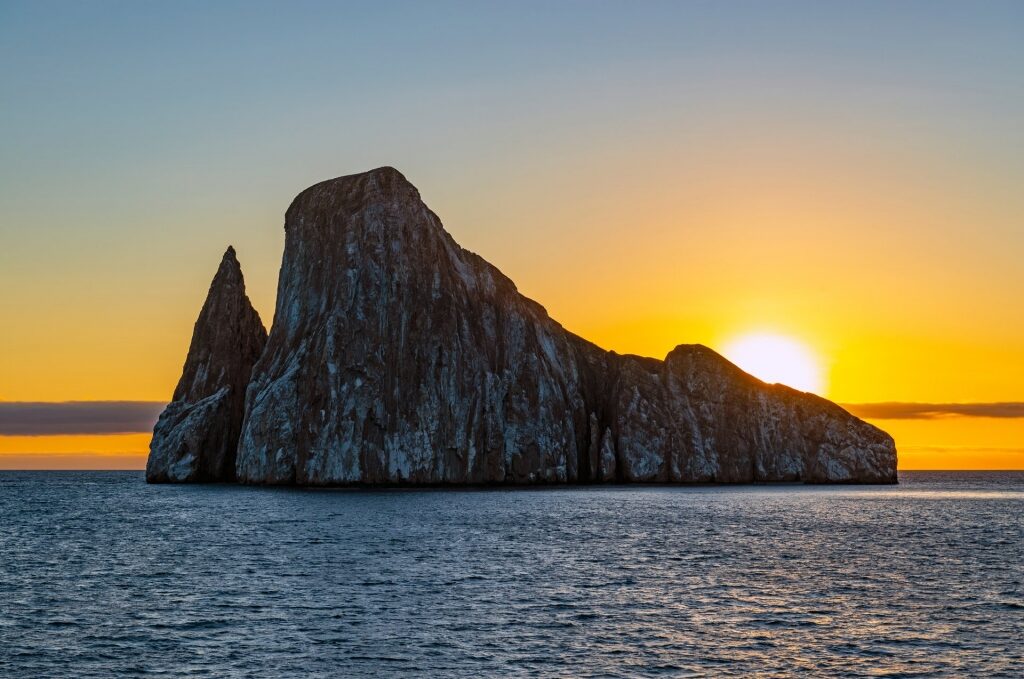
Kicker Rock
One of the most memorable things to do in the Galapagos islands is to stay around Kicker Rock at sunset for a real spectacle and a fabulous photo opportunity. If you align yourself with the rock, you can capture the sun as it sinks to the horizon, a ball of fire between the rock spike and the cliffs, throwing the whole formation into a dramatic silhouette.
Send a Postcard From Post Office Bay
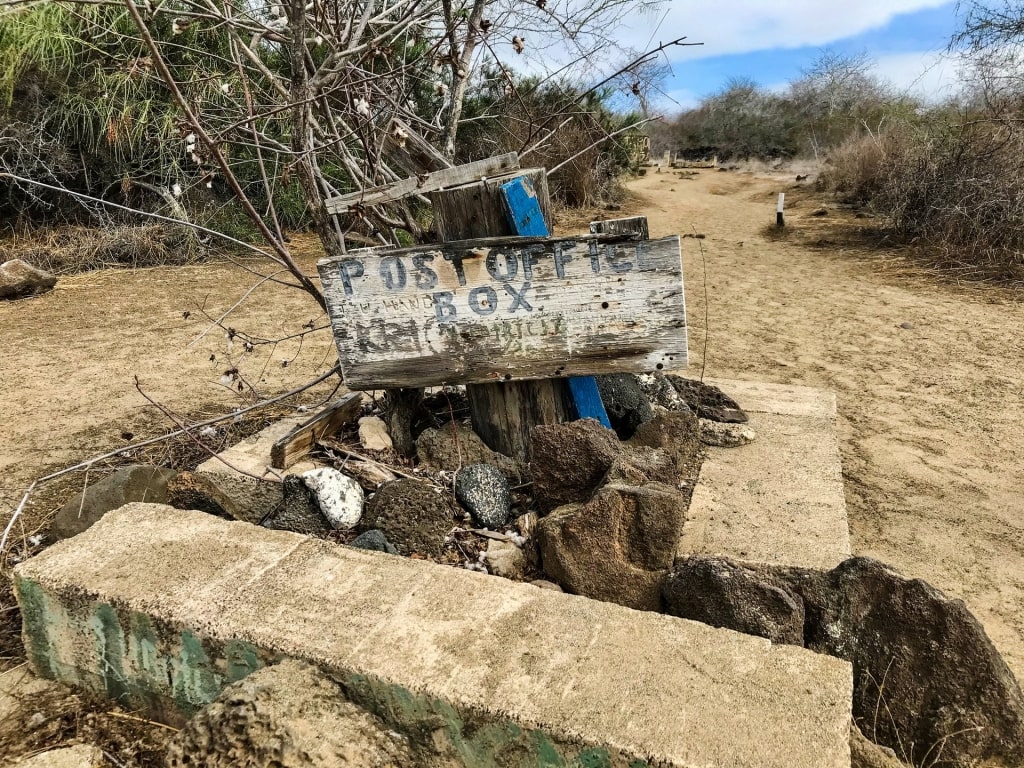
Post Office Bay
Of all the activities you come across in the Galapagos Islands, mailing a postcard from a barrel on a remote beach is not one that springs to mind. Post Office Bay on Floreana was a regular stop for whalers in the late 18th century, many of whom would be at sea for years.
Somehow, a system developed whereby homesick sailors would leave letters for loved ones back home in a barrel on the beach. Ships that were homeward bound would pick the letters up and deliver them once they arrived back in port.
Post Office Bay still functions as an unofficial mail depot. Usually, your guides will see what’s in the box and hand out letters and cards left by previous visitors to anybody who’s headed their way.
The time-honored system is for the letter to be hand-delivered, but most people simply add a stamp and mail them once they’re home. Still, it’s a thrill to think that your postcard has made it to its destination in such an unorthodox fashion.
Spot Iguanas on Dragon Hill
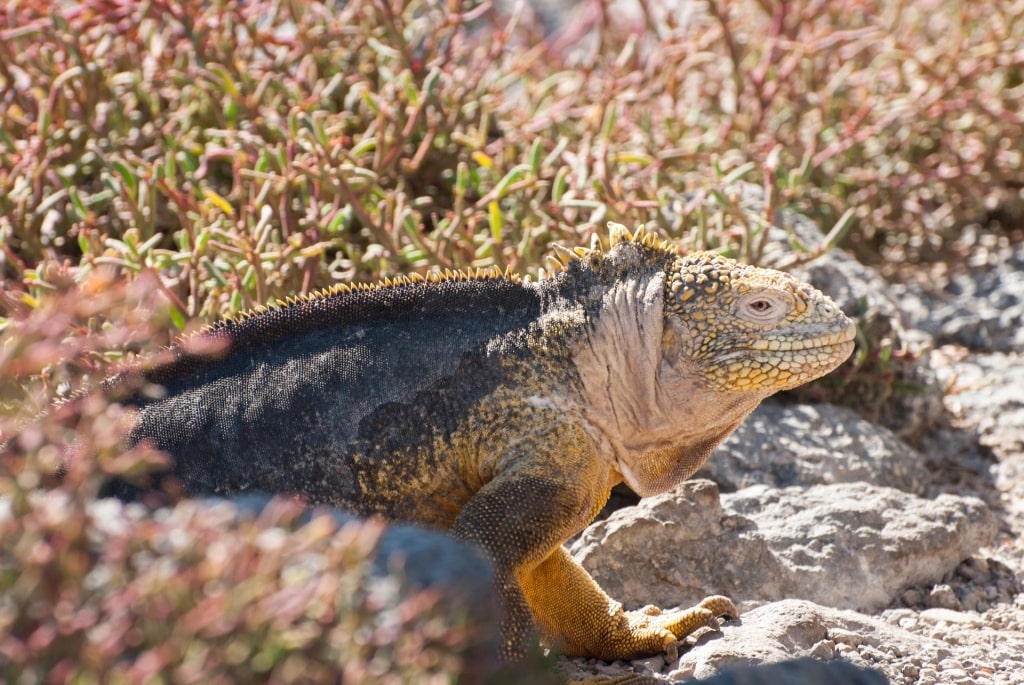
Land iguana in Dragon Hill
Cerro Dragon, or Dragon Hill, on Santa Cruz, gets its name from its large population of land iguanas. The walk up to the top is beautiful, with views over brackish lagoons where you’ll often see pink flamingos standing like statues.
The star attraction on this hike, though, is the land iguanas. These majestic, dinosaur-like creatures have craggy faces and a ridge of dramatic dorsal spikes. They feed on cactus plants, bask in the sunshine, and occasionally waddle across the trail. Needless to say, you must always give way to the iguanas.
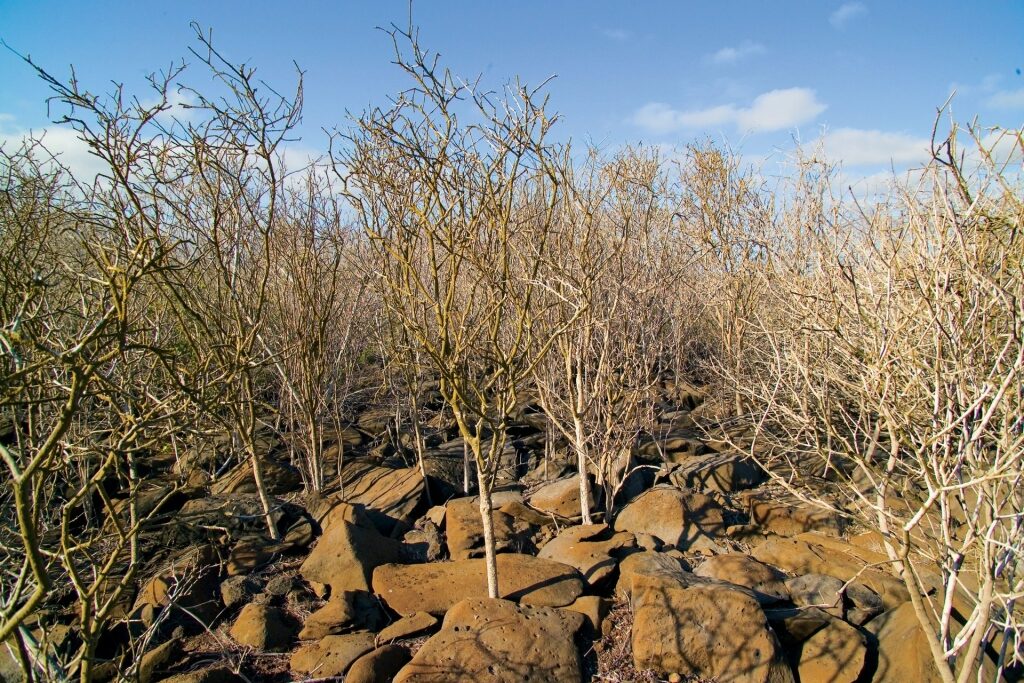
Palo Santo trees in Dragon Hill
Cerro Dragon is also famed for its Palo Santo trees, the wood of which is burned as incense, and Galapagos cotton plants. Look out for Darwin’s finches among the cacti and be prepared for a visit by a friendly mockingbird. It’s quite common for these fearless birds to perch on the hats and day packs of visitors, or to peck at water bottles.
Explore the Mangroves at Black Turtle Cove
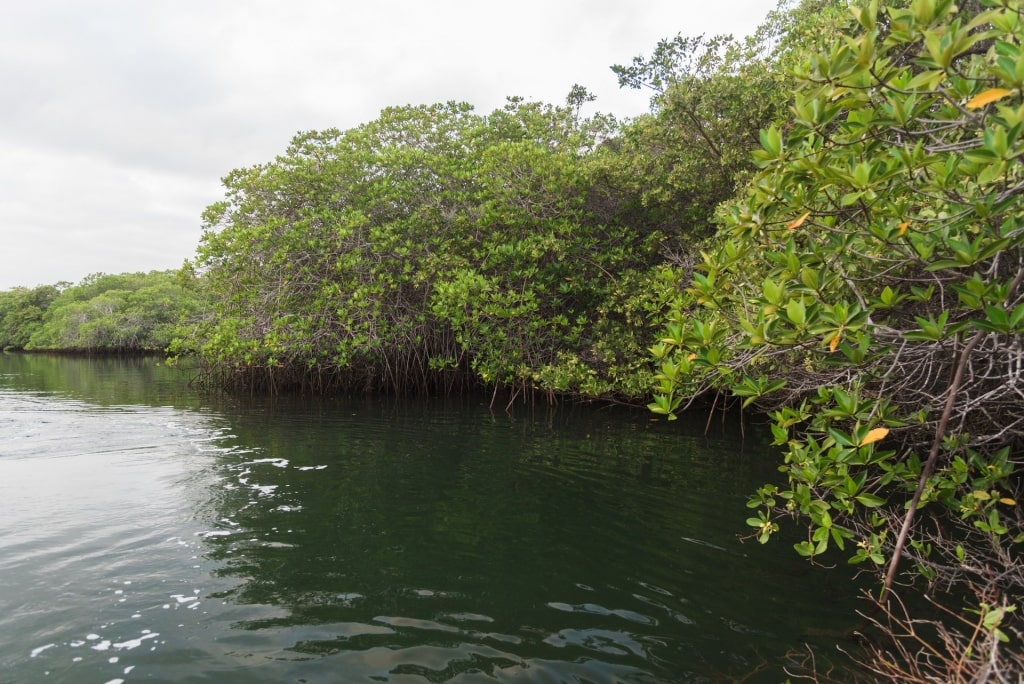
Black Turtle Cove
Board a zodiac to explore the watery labyrinth of mangroves around Black Turtle Cove on Santa Cruz. This green maze, one of the most pristine in the archipelago, is home to all kinds of species.
Sea turtles may pop their heads up to take a breath of air and check you out, while brown pelicans, egrets, and herons perch in the trees. Look down through the clear water and you may spot golden rays gliding across the sand, or white-tipped sharks circling slowly in the deeper water. You could also see Galapagos penguins here, zipping beneath your boat and popping up to swim alongside you.
See the Nesting Grounds of Boobies at Punta Pitt
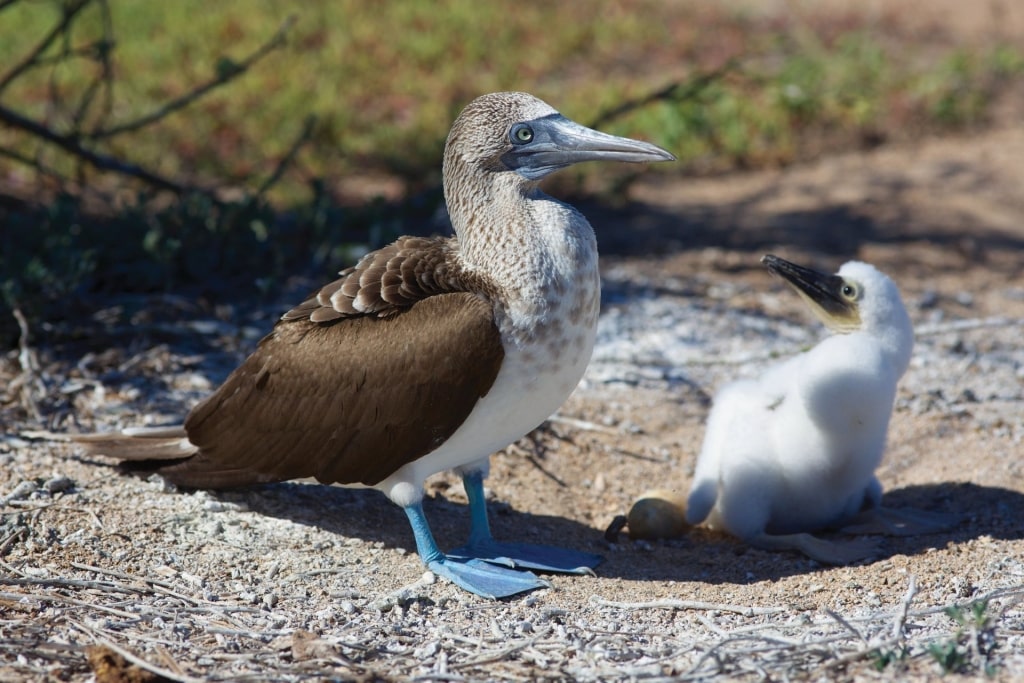
Blue-footed boobies in Punta Pitt
In a corner of San Cristóbal Island, at Punta Pitt, there’s a chance to see all three varieties of boobies: the red-footed, Nazca, and the famous blue-footed booby. There’s enough food here for all three to nest in harmony, with a chance to spot frigatebirds as well.
The nesting grounds are on a plateau, a rocky climb up a small gully, the views down over the glittering olivine beach and the cobalt-blue sea getting more impressive by the minute as you ascend.
You’ll find the birds nesting all around you. The red-footed boobies prefer bushes, while the Nazca boobies favor the cliffs. Most curious of all are the blue-footed boobies, which simply lay their eggs on the ground.
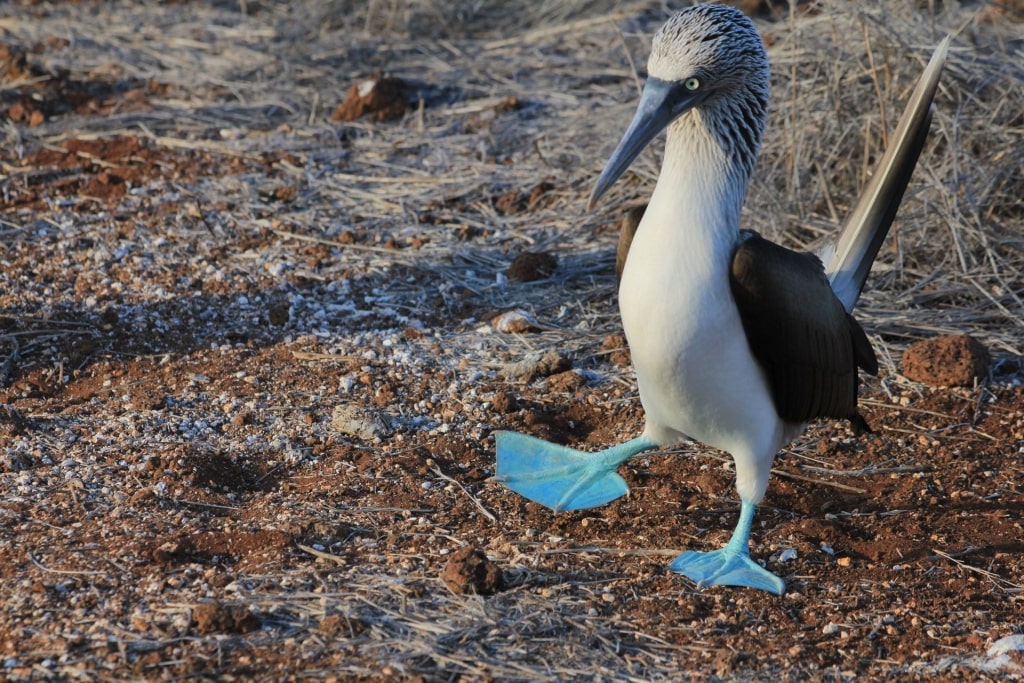
Blue-footed booby courtship dance
If you’re lucky, you’ll witness the courtship “dance” of the blue-footed booby. The male presents his intended with a stick or a stone. He then points his beak and tail skywards, whistles, and marches around the female, showing off his blue feet. The more bright and impressive the feet, the better the breeding partner.
Stroll Among Giant Tortoises on Santa Cruz
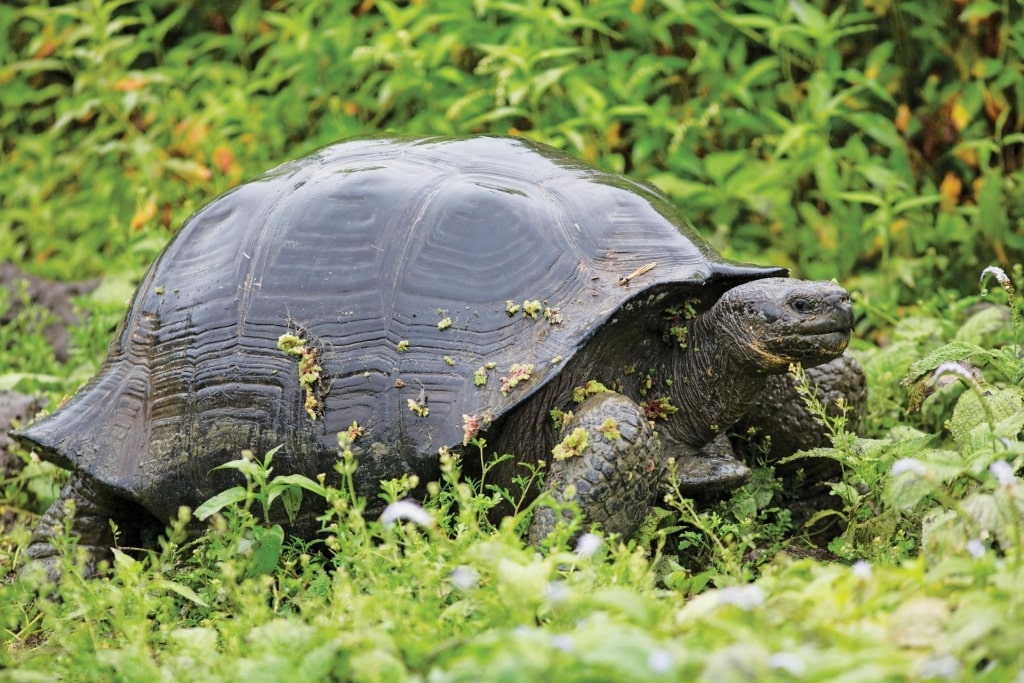
Galapagos tortoise
Magnificent giant tortoises, which can live to more than 150 years old, prefer the misty highlands of Santa Cruz to the beaches. You’ll see these venerable reptiles around the farmland up here, shuffling slowly through the native vegetation.
Often, they’ll be basking in a muddy pool, or munching ponderously on leaves. Getting close to such ancient, serene creatures (maintaining the six-foot distance rule) is one of the most thought-provoking things to do in the Galapagos Islands.
You can learn more about these gentle giants at the fascinating Charles Darwin Research Station outside the bustling little town of Puerto Ayora. There’s a captive breeding program here, where the 11 subspecies of Galapagos tortoise are bred, ready for release into the wild.
Snorkel Off Vicente Roca Point
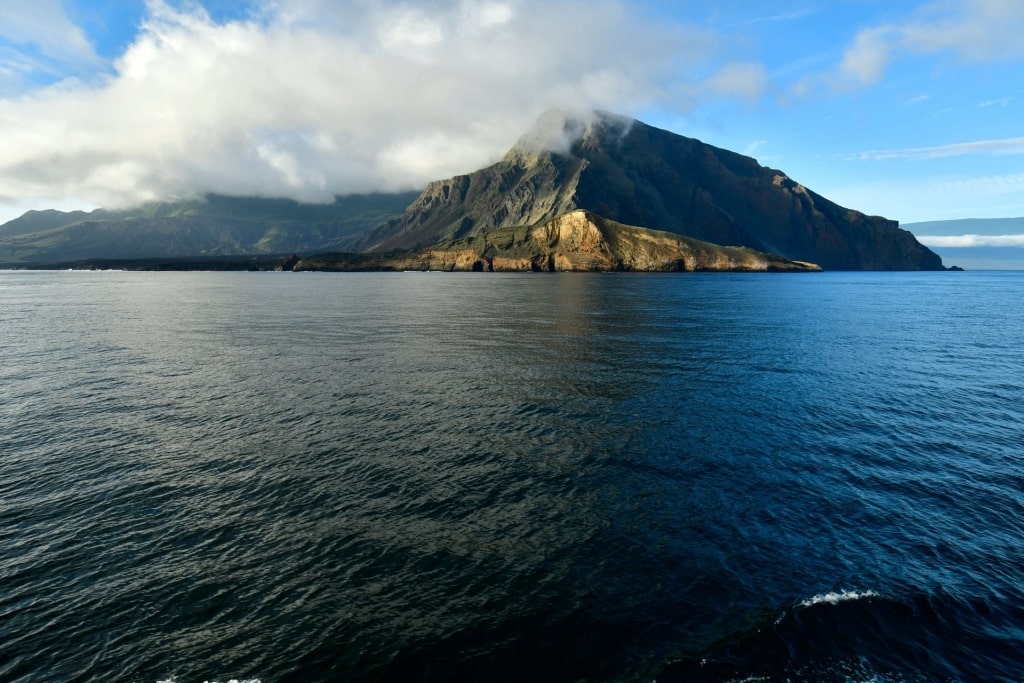
Vicente Roca Point
Coldwater currents well up at Vicente Roca Point, off Isabela Island, giving rise to abundant food and a spectacular diversity of marine life. This is one of the best deep-water snorkels you’ll find in the Galapagos (“deep water” means from a boat, as opposed to off the beach).
You could see giant rays flitting across the sandy sea bed, or green sea turtles drifting gracefully through the blue depths. There are dozens of species of fish, from parrotfish to Mexican hogfish, barracuda, wrasse, and pufferfish.
If you’re lucky, you could spot a white-tipped shark circling beneath you. Look out for the small, brownish bullhead shark, which dwells on the ocean floor. This unassuming, passive creature is one of the oldest species on earth, dating back to the early Jurassic period nearly 200 million years ago.
Look for Waved Albatross on Española
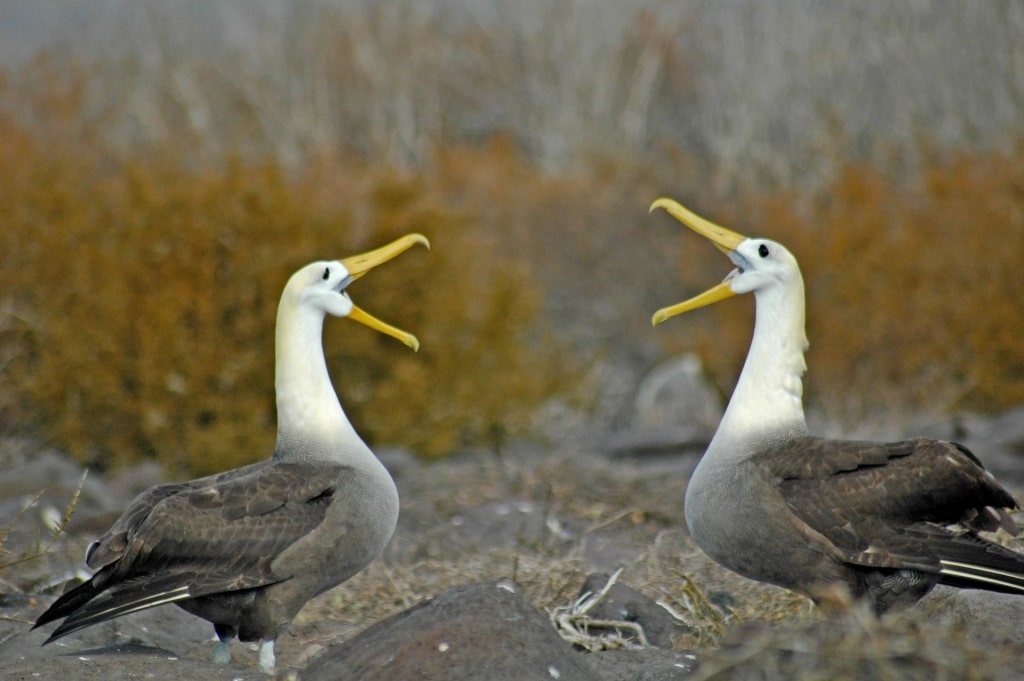
Waved Albatross, Española
Española, the southernmost of the islands and also the oldest, formed some four million years ago, is the only place in the Galapagos where you’ll see the graceful waved albatross. This bird has an enormous wingspan of eight feet, which means it’s able to glide low over the tips of the waves. Much of its life is spent at sea.
The albatross arrive from their feeding grounds in the open ocean in late March and lay their eggs between mid-April and late June, departing again in December. You may be lucky enough to witness their courtship dance, in which beaks are clashed and heads bobbed as the couple waddle around one another.
What should you not miss in the Galapagos?
Don’t miss a chance to get in the water and snorkel in the Galapagos. Even if you’re a novice, you will be enchanted by the colors and life of the underwater world. You should see sea lions zipping around, marine iguanas munching on the seaweed, Galapagos penguins, and graceful sea turtles as well as vast shoals of fish.
There are chances to snorkel from the beach, so if you’re less confident, you don’t need to go out of your depth. The water and the guided snorkel trips are safe for all ages, including children.
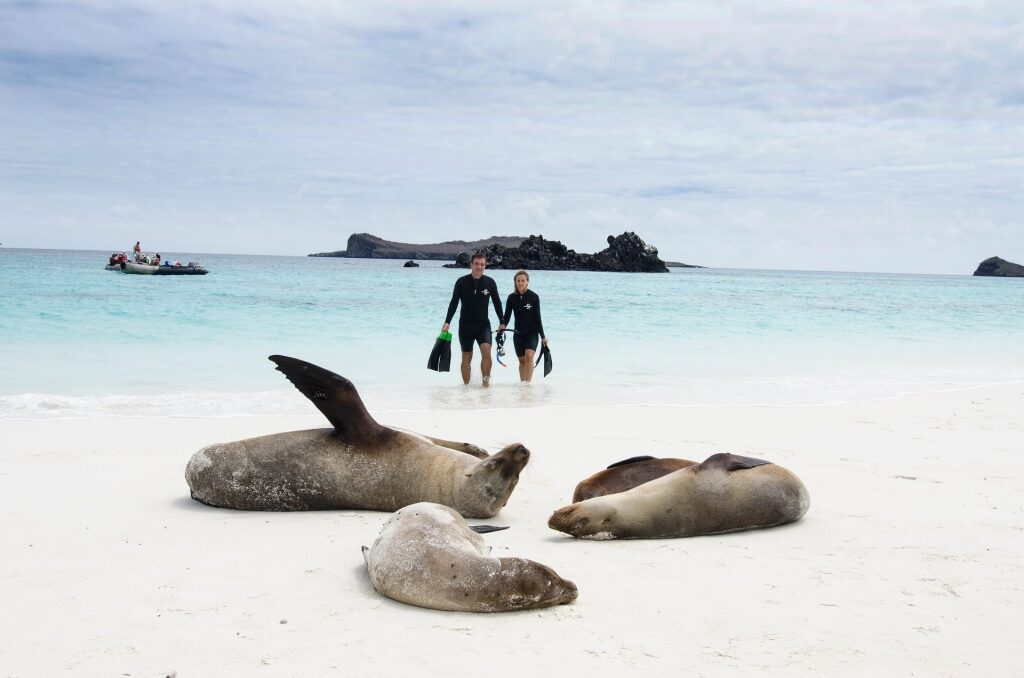
Galapagos
How long do you need in the Galapagos Islands?
While the temptation is to stay as long as possible, a week is a fantastic introduction to the islands. You’ll often stop at two different anchorages in a day, with morning and afternoon activities, so there’s a great variety of locations even in the space of seven days.
Any itinerary will include chances to hike, snorkel, explore by Zodiac, and visit pristine Galapagos beaches. The biggest choice is which itinerary to select, but all of them include chances to spot creatures like sea lions, iguanas, lava lizards, boobies, and sea turtles.
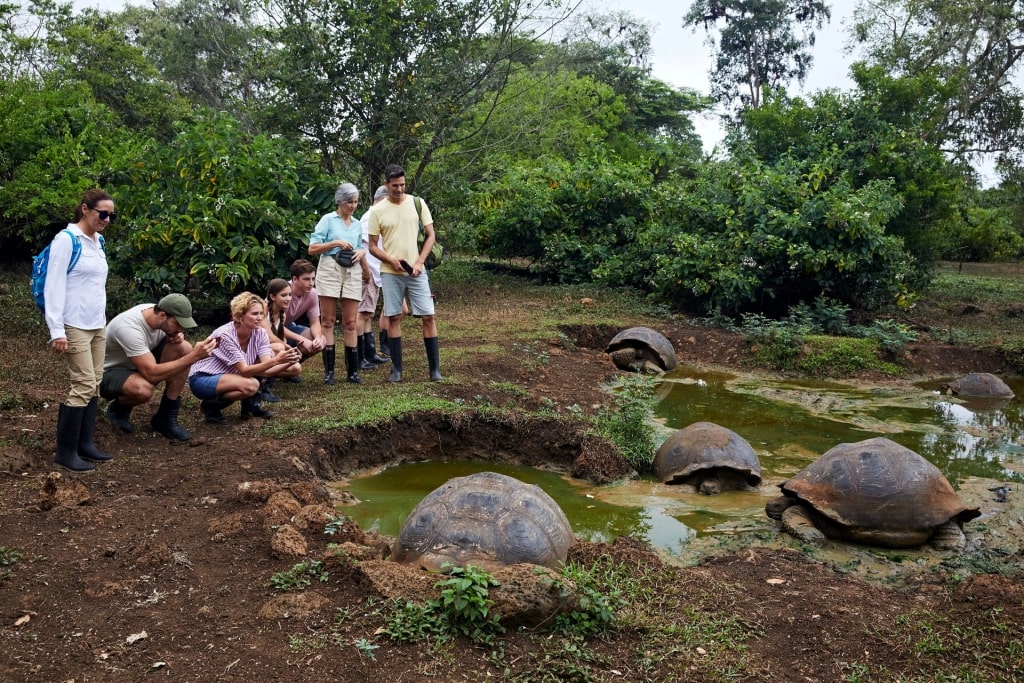
Galapagos
Ready to plan the adventure of a lifetime? Browse our cruises to the Galapagos and start preparing for an unforgettable experience.
